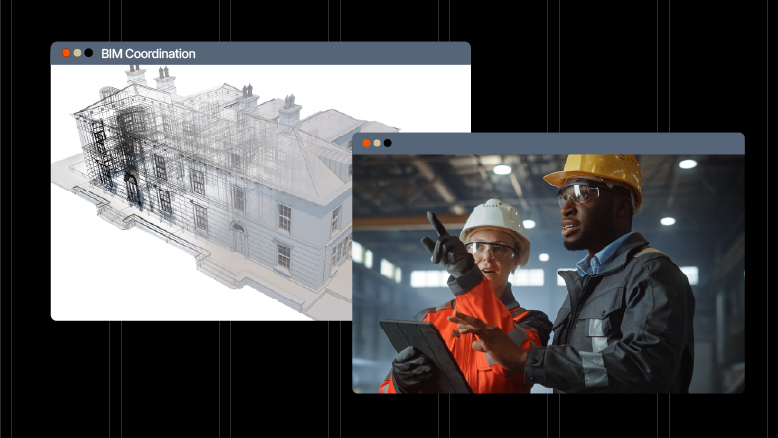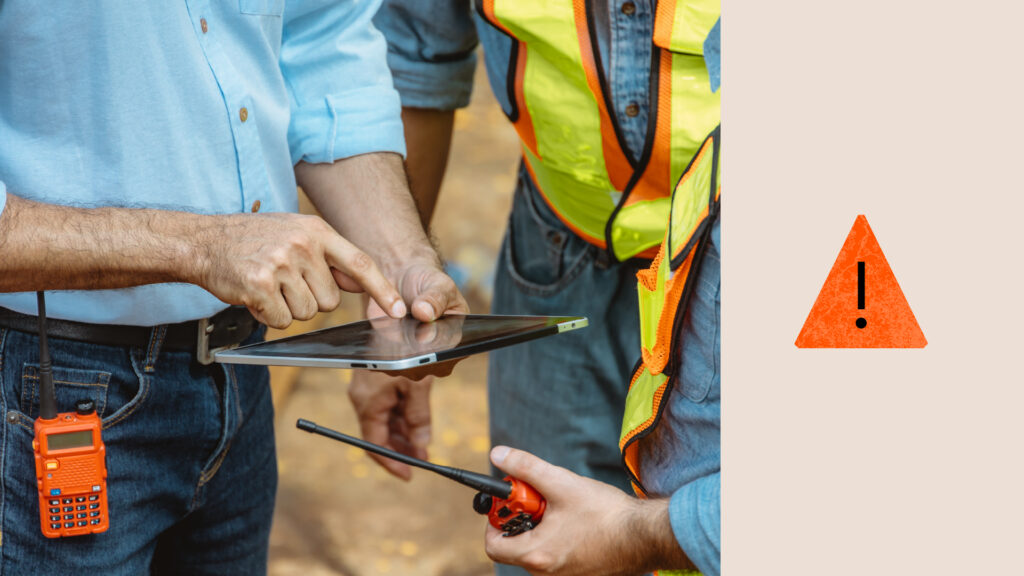— 9 min read
Harnessing Data to Manage Civil Projects & Create Digital Infrastructure
Last Updated Mar 18, 2025
Last Updated Mar 18, 2025

Civil projects tend to be some of the most complicated construction endeavors. They often need to clear multiple layers of government bureaucracy and regulatory compliance, meet strict budgetary constraints, endure intense scrutiny from a wide range of stakeholders and require coordination between multiple agencies. Navigating these complex considerations requires effective and extensive use of data and digital tools.
This article explores how to create a digital infrastructure, which is a comprehensive system of digital tools and technologies designed to help manage and execute civil projects — particularly on a city-level.
The article will also look at how to create data systems to help manage civil projects and how to overcome challenges to adopting new systems, which are often the very reasons the systems were needed in the first place: bureaucratic processes, budgetary constraints and scale.
Table of contents
Leveraging Data to Improve Civil Projects
Collecting consistent and meaningful data should provide information that can help improve how tasks and processes are done. Project managers working at private contractors tend to be nimble in their ability to introduce and integrate data systems.
That’s much harder for teams working for cities, who often need to consider a long list of variables, stakeholders and processes for an array of complex, interconnected projects and assets. Many cities have legacy systems for collecting and storing data, but those systems tend to be paper-based, hard to access and limited in the ways they can be applied.
Committing to creating a digital infrastructure is, at its roots, about creating systems for collecting, sharing, storing and analyzing data that empower stakeholders to make informed decisions and communicate effectively. Data and data analysis should be able to improve civil projects in a number of ways.
Enhanced Project Tracking and Forecasting
Cities need to manage projects with different timelines, risks, stakeholders and challenges. Digital tools like Geographic Information Systems (GIS) or project management software such as Procore can monitor timelines, identify potential bottlenecks, adjust plans proactively and communicate about changes.
Centralized Information
Asset management systems help track, manage and optimize assets across multiple departments, sectors and locations. For cities, this can help with managing infrastructure, such as roads, bridges and utility networks.
Optimized Resource Allocation
Tools such as project management software or Enterprise Resource Planning (ERP) Systems should help coordinate different projects and departments by providing tools to strategically distribute resources, such as funding, personnel, equipment and materials.
Improved Communication and Decision Making
Many software programs have dashboards that provide easy-to-read and easy-to-share tools for viewing project metrics, identifying risk and managing communication between stakeholders. This can help with everything from improving workflows, increasing interagency collaboration to policy makers being able to make decisions based on real-world information.
Increase Accountability
Civil projects tend to involve different departments and agencies. Data can track performance and document changes to ensure stakeholders deliver on their part of a progress.
Grant Outcomes Managed and Improved
Many cities rely on grants from federal, state and private agencies to fund projects and maintain infrastructure. Data helps ensure compliance with grant regulations, share progress with grantors and apply for new grants.
Steps to Creating Digital Infrastructure
Creating digital infrastructure for civil projects is meant to help improve, optimize and simplify the systems that cities rely on for every part of the construction process. Cities are at various stages of the process of transitioning to digital systems, based on factors such as budget constraints, leadership priorities and the needs of a city and its citizens. However, there are a few key steps that can help all cities create effective digital systems for data and data analysis.
1. Identify processes currently in place.
Creating digital systems starts with understanding what you’re working with and how things are currently getting done. Seek information on the nature of processes, inefficiencies, redundancies or other areas where improvement would be beneficial.
For cities, this might include mapping out current processes and workflows, meeting with stakeholders to identify breakdowns and bottlenecks or evaluating historical budgets and performance.
2. Identify potential systems and tools.
Because cities and civic organizations often have such a range of needs, projects and stakeholders, they often need a range of digital tools. Common software includes databases for data management, tools for asset management and platforms for construction management, such as Procore. When selecting tools and systems, there are a few important considerations.
Scalability
Building digital infrastructure takes time and often involves phased implementation, so it’s important to have a tool that can accommodate changing amounts of data and numbers of users. Tools should be able to accommodate future growth, as the number of users increases or different types of projects are introduced, as well as offer options if the number of users needs to be decreased, in the case that a grant, initiative or big project comes to an end.
Increased Number of Users/Different Project Types
Because civil projects often depend on grants or initiatives, it’s important to assess whether a tool will continue to be helpful in multiple circumstances.
Integration Capabilities
Digital infrastructure should have systems and tools that fit together, aren’t redundant, and whenever possible, are capable of sharing data. For example, project management software should integrate with a database so the software is always referencing accurate and up-to-date information.
Usability
From owners to subcontractors, a wide range of people need to be able to use and access the digital infrastructure. Tools and systems should meet as many people’s needs as possible, provide easy-to-understand information and have mobile accessibility.
Security and Risk Management
Establish clear and rigorous requirements for protecting a city’s important and sensitive information. An IT department, external consultants or representatives with a software company can help assess risks associated with data sharing, document accessibility and compliance with industry standards.
Cost vs. Benefit
Systems and tools should be worth the amounts required to get them, especially for cities with strict budgetary restraints. Further, it should be financially sustainable to keep tools running, maintained and up-to-date. Measure a tool’s performance over time and compare it with all costs, including initial acquisition, ongoing fees and other intangible factors, such as training time
3. Implement new tools in phases.
For cities with a variety of departments and many construction partners, transitioning to digital systems can’t happen all at once. A phased approach involves identifying foundational assets and prioritizing inputting their data into digital systems and applying tools to their management. High priority assets include streets, bridges and utilities.
Segmenting the process of introducing and implementing tools means that the process is steadily improved as it’s expanded towards more departments or less foundational elements, such as sidewalks, green spaces or monuments.
4. Input existing data.
Cities have troves of information about systems, projects and infrastructure. However, that data has often historically been kept in different locations in a range of formats, many of which are paper-based. Inputting old data from legacy systems can take a long time, but is important to establishing digital infrastructure that is built on accurate and comprehensive data, providing a reliable foundation for project management.
5. Secure buy-in and train users.
For digital infrastructure to work, it needs buy-in from everyone, from top decision makers to the people using the tools every day. Identify champions of change who will be excited to pilot systems and will advocate for their adoption. Highlight early successes that demonstrate the value of innovations and provide training programs to help new users effectively integrate systems into their work.
Overcoming Common Challenges
The journey towards creating a digital infrastructure for managing civil projects is full of challenges.
Funding Constraints
One of the most significant challenges is almost always related to securing necessary funding to acquire, implement and maintain digital systems. Cities that have had success adopting digital infrastructure have turned to a number of places for funding, such as capital budgets or grants for initial implementation and first-year costs. Maintaining adequate funding is usually dependent on being able to demonstrate the tool’s return on investment (ROI) and long-term benefits to budget-conscious stakeholders.
Data Quality and Integration
The accuracy of data is perhaps the single most important thing to unlocking the potential of any innovation. Systems like GIS, project management software or databases all require extensive data from before and after the system was introduced. Defining strict guidance for data formatting and having multiple data reviewers can help maintain high quality and reliability in data.
System Adoption
Widespread adoption of digital systems across agencies and departments requires strategic planning for any organization. Tailored training programs and making time to meet with reluctant stakeholders to explain the objective of introducing the tool, answer questions and highlighting early wins.
Collaboration Between Different Stakeholders
In some cities, different agencies have been responsible for establishing their own systems to manage data, documents and communication. Each agency will have unique concerns towards leaving legacy systems and its own learning curve for adopting new ones.
Communicate with people to understand their needs and concerns and to troubleshoot potential barriers to adoption. Further, requiring partner agencies to use the systems and platforms used by the city, even if just with view-only accounts, can help ensure compatibility and streamline communication.
Maintenance and Adaptation
Over time, systems often need to be configured to stay present with software updates and grant conditions, while also being monitored for effectiveness and quality control. Cities should have a designated person or group to maintain digital tools and ensure they are meeting the demands of new projects.
Stay updated on what’s happening in construction.
Subscribe to Blueprint, Procore’s free construction newsletter, to get content from industry experts delivered straight to your inbox.

The City of New Orleans: A Case Study in Creating Digital Infrastructure
New Orleans committed to transitioning to digital tools for collecting data and managing more than $2.2 billion in infrastructure projects. The goal was to improve decision making, improve vendor management, save money by optimizing important workflows and get a holistic view of the city’s projects, assets and infrastructure. New Orleans invested in an Oracle database for program management, Cartegraph for asset management and Procore for construction and project management.
The city took a phased approach to implementing new systems and inputting data on foundational assets like streets and utilities. The city prioritized agencies and departments that would benefit most from new systems and used those successes to demonstrate the tool’s potential to other agencies and more hesitant adopters. Similarly, the city identified, what they called, “champions of change,” which were departments and people who were eager to try new systems and could help advocate for tools to other workers and teams.
Over time, New Orleans was able to leverage its digital infrastructure and data-driven decision making to achieve many of its goals. It improved coordination with partner agencies, presented policy makers with valuable, up-to-date data and improved processes and workflows, such as reducing the processing time for change orders from an average of ~64 days to somewhere between seven and 17.
Was this article helpful?
Thank you for your submission.
0%
0%
You voted that this article was . Was this a mistake? If so, change your vote here.
Scroll less, learn more about construction.
Subscribe to The Blueprint, Procore’s construction newsletter, to get content from industry experts delivered straight to your inbox.
By clicking this button, you agree to our Privacy Notice and Terms of Service.
Categories:
Tags:
Written by
Carson Rapose
Carson Rapose is the Innovation Manager for the City of New Orleans Project Delivery Unit. He holds a bachelor’s degree in international relations from the University of New Orleans and an Associates in Arabic from the Defense Language Institute in Monterey, California. Carson has been with the City of New Orleans for over 5 years, where he has been integral to the implementation & digitization of numerous processes, refinements, and the implementation of Asset, Construction, and Program management systems. Carson began his career as an Arabic Linguist and Cryptologist for the United States Navy. He later worked for the National Security Agency where he led a clandestine direct support intelligence team through multiple combat missions. Most recently he was employed at a fortune 500 Bank’s Financial Intelligence Unit where he developed new algorithms to efficiently detect & report suspicious activity. After a few years in the corporate world, the call to serve resurfaced and he is now proud to work to improve the City of New Orleans however he is able.
View profileJames Hamilton
70 articles
James Hamilton is a writer based in Brooklyn, New York with experience in television, documentaries, journalism, comedy, and podcasts. His work has been featured on VICE TV and on The Moth. James was a writer and narrator for the show, VICE News Tonight, where he won an Emmy Award and was nominated for a Peabody Award.
View profileExplore more helpful resources

Streamlining Construction Projects with Effective BIM Coordination
The old saying goes: if you fail to plan, you plan to fail. Construction professionals know this better than nearly anyone. To take a project from a vision in an owner’s...

Construction Invoice Factoring: A Quick Guide
Construction companies need to maintain consistent cash flow. Projects can take years to complete, and delays and unforeseen events may keep expenses mounting. Adding to this load are typically high upfront...

Understanding Subcontractor Bid Packages in Construction
Construction bid packages can have a cascading impact on the success of a construction project. The quality of a bid project may affect the quality of the bids, which in...

Tackling the Top 10 Construction Industry Issues
The construction industry is constantly evolving, bringing both opportunities and challenges. Companies must navigate an array of construction industry issues — from workforce shortages to integrating new technologies into their...